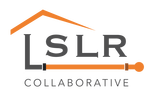Wisconsin Has Hundreds Of Thousands Of Lead Water Lines, But Is Also A Leader In Addressing Issue4/30/2020
WXPR Ben Meyer See the original article. More than 150,000 Wisconsin homes, businesses, schools, and daycares get their water through lead pipes, according to data newly compiled by the Environmental Defense Fund. Consuming even small amounts of lead can lead to behavioral, learning, and cognitive problems in children. Furthermore, for 300,000 water lines, Wisconsin cities don’t even know what the pipes are made of. Even so, the Environmental Defense Fund calls the state “ahead of the curve” on identifying and addressing lead piping. Cities in northern Wisconsin provide examples of progress. A few years ago, Eagle River announced the city would pay to replace all existing lead water service lines for homeowners across the city, about 60 of them. Because the lines are underneath private property, they’re usually the homeowners’ responsibility. “It worked out great for those property owners,” said utility manager Mike Sanborn. “They were able to get their services replaced to copper at no charge to them.” The city is just about done and just about lead-free. It’s something Sanborn doubts could have been accomplished without the city covering the cost. “Especially right now, with what’s happening with the virus, and the lack of people working, it definitely would have been a challenge to get them to commit to spending any money on their service lines,” he said. Eagle River got a half-million dollars from the DNR in 2017 and 2018 for the project. It was part of $27 million the state pledged to communities to help replace lead service lines.
Statewide, the program has helped pay for the replacement of 5,600 lines to homes and more than 300 to daycares. “I think we would definitely consider it a success,” said Becky Scott, a federal liaison and policy analyst for the DNR’s revolving fund programs. “Several small communities have informed us that they have removed all of the lead services lines in their community, which definitely is a plus.” Now, the DNR is rolling out a new $61 million grant program for communities to help homeowners offset the cost of replacing their lead lines. Even so, Scott called the tens of millions of dollars a “drop in the bucket” in the massive effort to get rid of lead lines statewide. “We’re seeing this program sort of as a momentum-builder to try to get the communities in the habit of getting these replaced,” she said. According to one estimate, the lines replaced through the 2017-2018 funding were only about four percent of the lead lines in the state. Besides granting money, the DNR is pushing communities to make lead replacement not a choice for homeowners, but a requirement. “Sometimes, even when the community is going to pay 100 percent of the cost of the replacement, some homeowners say, ‘No. We don’t want you in our house. We don’t want you ripping up our yard. We don’t care about the lead service line,’” said Scott. The city of Mosinee thought making lead replacement mandatory was a good idea. Last year, it passed an ordinance requiring homeowners to replace lead lines within a year of their discovery by the city. “We also wanted to have a tool available to us to encourage people to replace the lines or require them, if that’s what it needed to be,” said City Administrator Jeff Gates. Through its own DNR grant, Mosinee offers $2,500 to homeowners to offset the price of the work, which is often enough to cover everything. “We knew that these lines had to be taken care of, from a drinking-water-quality standpoint,” Gates said. Mosinee’s lead lines are part of about 154,000 in the state, according to an analysis finished this month by Environmental Defense Fund Chemicals Policy Director Tom Neltner. Numbers elsewhere in the United States are sketchy, but Neltner figures that number puts Wisconsin among the most-afflicted states. “I think Wisconsin’s probably in the top ten in the country,” he said. “It isn’t at the top. It’s much better than its state down south. Illinois has a bigger problem.” Chicago alone has 380,000 lead lines, in part because it used to require they be installed. Even though Wisconsin is likely near the top in lead lines, Neltner said it’s also a leader in addressing the issue, thanks, in part, to grant programs like the one benefitting Eagle River and Mosinee. “Wisconsin is actually way ahead of the curve, and that’s due to some leadership at the Department of Natural Resources and the Public Service Commission,” he said. States like Virginia and Vermont have modeled similar programs after Wisconsin. The state is also one of just a few that requires reporting of pipe materials in all communities. It’s something the federal government is about to require as part of a revised Lead and Copper Rule. But mandatory reporting also sheds light on another issue. Many communities don’t know what’s underground. The material of about 300,000 lines in Wisconsin is unknown, largely because of antiquated recordkeeping, said Neltner. “Remember going to the library and pulling a little card that would be for that library book? Well, they had the same thing for pipe taps. So they have to dig those out, transcribe them, make them electronic. A lot of communities haven’t made that investment,” he said. “I think they’re going to have to now.” Knowing what’s underground, and replacing the lead, is more important than ever, said Neltner. We’ve known lead ingestion can cause behavioral and cognitive problems for kids. Data now shows it can lead to cardiovascular issues for adults. “We know it gets you coming, as children, [and] it gets you going as adults with cardiovascular [problems],” Neltner said. “Let’s get the lead service lines out. Let’s make that investment in the community.” Comments are closed.
|
Have a suggestion for an article or blog to add?
Let us know! Type
All
Date
April 2023
|


 RSS Feed
RSS Feed